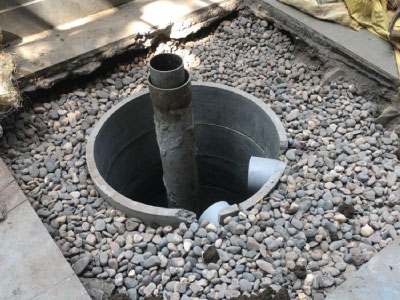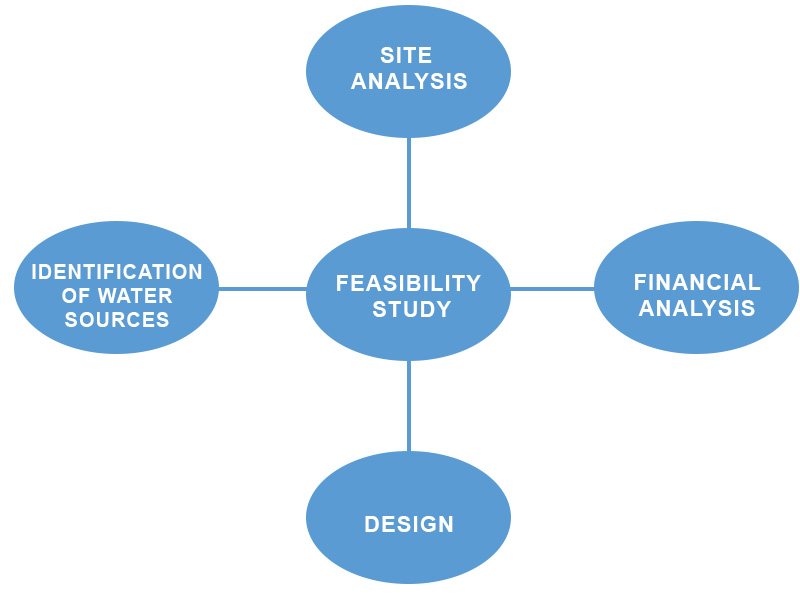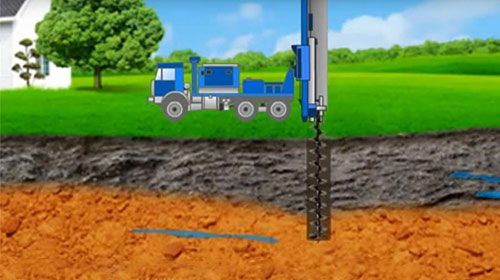Our Rain Water Harvesting (RWH) Services
a) Designing of Rainwater Harvesting Services
Rainwater Harvesting System designs of Razik Enterprises are customized by professionals and are based on conditions of site and site survey.
The below process is followed by our team to develop effective designs :
- Site Study for data collection & Analysis
- Understand the client’s requirements
- Rainwater Harvesting Report
- Detailed Drawings of complete Rainwater Harvesting System
- BOQ of Rainwater Harvesting System
- Regular Site Visits to monitor the implementation
- Issue of Completion Certificate


b) Feasibility Study OF Rain Water Harvesting
To understand the Financial aspects and Master plan of Many Big projects of more than 10acres, there is a Requirememt for a Feasibility Study of the Site. Feasibility Study includes data and information like Rainfall data, recharging capacity, the possible yield of water, different possible schemes, Master Plan of Site, conceptual drawings and an approximate cost of implementation. It also gives the possibility of implementation in phases.

c) Water Audit- Water Conservation & Water Neutrality
Water audits analyZe a facility’s water use and identify ways to make it more efficient. Audits review domestic, sanitary, flushing, landscaping, and process water use and identify ways to increase a facility’s water-use efficiency.
The objective of water audit is to assess the following
- Water Sourced/Extracted
- Water used
- Losses both physical and non-physical
- To identify and priorities areas which need immediate attention for contrlis
By conducting a professional water audit for your installation, we help make your business or service as water-efficient as possible. We employ the latest equipment and highly effective methods to identify equipment or practices that can be modified to reduce water consumption across your facility or premises. With proven expertise in water auditing, our dedicated team works closely with you throughout the auditing process. After zeroing on the problem areas, we assist you in implementing the findings of the water audit which holds the key for water-saving for now and in the future.
The purpose of a water audit report is to provide an assessment of current water usage practices, and provide a roadmap towards decreasing water usage in the future or to find additional water sources to fulfil the water requirement. During the water audit services we do the following:
- Audit of all water-using equipment and processes.
- Identify any inefficient plumbing fixtures and appliances, as well as leaks and water waste.
- Identify any kitchen equipment or processes that use more water than is necessary.
- Look for water leaks.
- Check polis, fountains and ponds for leaks.
- Check float valves in coliing towers for excessive water usage.
- Review irrigation schedoles, and irrigation systems and make recommendations as needed.
- Check for broken sprinkler heads and excessive runoff.
- Suggest upgrades, retrofits, or new more efficient equipment.
- Compare water meter data to estimate water usage data to identify if there are substantial problems with water leaks or metering errors.
- Provide a list of suggested water conservation measures, along with water savings potential, costs to implement, available incentives, and simple payback.
Water Neutrality
The idea of the water-neutral concept is to stimulate industries and corporations that undertake water-consuming activities to make their activity ‘water neutral’ by reducing water consumption and by compensating for the negative impacts of remaining water consumption through investing in projects that promote the sustainable and equitable use of water within the environment and community that is affected.
Water Conservation
Water Conservation methodology is an important component of Water Audit. The different methods of water conservation are identified based on site conditions. Rainwater Harvesting is one of the important methods of water conservation.
d) Borewell Survey
Dowsing method is used for Borewell Survey. The dowser walks through the field with the dowsing rod. When he walks over a location that has the potential of yielding water, the dowsing rod will rotate in his hands and point toward the ground. The points are suggested by the geologist for borewell drilling.

e)Hydrogeological Survey
Hydrogeological Survey is the investigation of underground formations to understand the hydrologic cycle, know the groundwater quality, and identify the nature, number and type of aquifers. The ERT method is used to conduct the Hydrogeological Survey. The ERT method is an electrical testing method where current is induced in the ground using two current electrodes. ERT can be used to map bedrock depths and geometry. The Hydrogeological Survey helps to design effective Rainwater Harvesting Recharging System.
f)NOC from CGWB (Central Ground Water Board)
- We obtain NOC from CGWB for Water Extraction from Borewell & Dewatering purpose.
- We do online documentation for NOC of CGWB.
- Liaison with CGWB officials for getting NOC.
